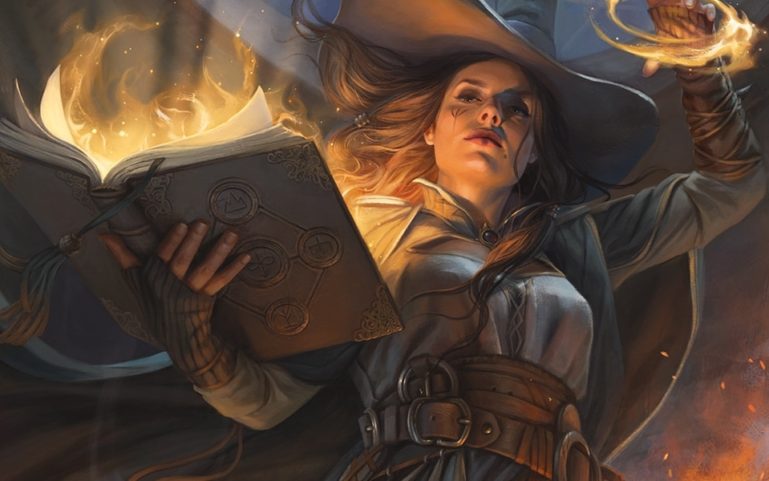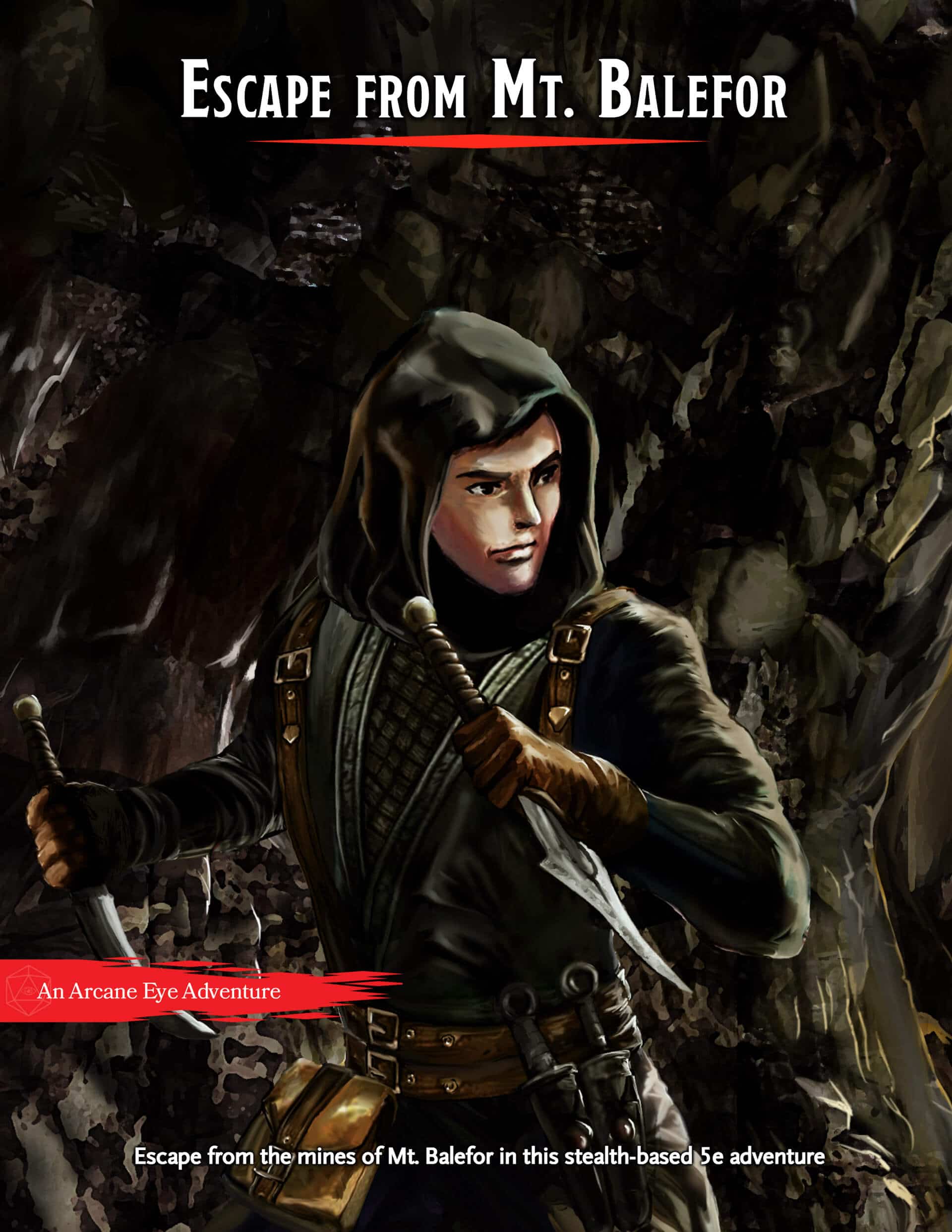Tasha’s Cauldron of Everything Review
Published on December 18, 2020, Last modified on November 14th, 2022
Tasha’s Cauldron of Everything is a D&D 5e rules expansion featuring a ton of new content for players and some optional rulesets for DMs.

Table of Contents
What is Tasha’s Cauldron of Everything?
“A magical mixture of rules options for the world’s greatest roleplaying game.”
Tasha’s Cauldron of Everything (TCoE) is the second “expansion” of the D&D 5th edition rules, coming 3 years after the first expansion, Xanathar’s Guide to Everything. TCoE is mainly focused on player character options with:
- The Artificer class, republished from Eberron: Rising from the Last War
- 30 new subclasses, at least 2 for each class
- Optional class features for each class
- A published ruleset for customizing your race’s ability score increases and proficiencies
- A published ruleset for changing skills and subclasses mid campaign
- 15 new feats
- 21 new spells
- 47 new magic items, including 11 magical tattoos
DMs, on the other hand, get:
- Rules for Group Patrons
- A guide for running Session 0
- Rules for player sidekicks
- Tips on how to parley with monsters
- Random tables for Supernatural Regions, Magical Phenomena, and Natural Hazards
- 13 puzzles that can be integrated into just about any campaign
Tasha’s Cauldron of Everything weighs in at 192 pages and runs about $43 on Amazon.
What does Tasha’s Cauldron of Everything include?
The contents of TCoE are explored in more depth in the following sections.
Chapter 1: Character Options
At 79 pages, this chapter is the meat and potatoes of the book and contains all of the new player character options. This chapter is somewhat controversial as Wizards of the Coast has come under fire in the past year to adapt their game away from notions of racism in the way the game’s races are handled.
Controversy aside, this chapter breathes new life into the playable character options in the 5th Edition system.
The Good
Subclasses
The subclass options in this book are splendid. While many of the subclasses featured in this chapter are adapted from Unearthed Arcana or featured in other published works, it doesn’t take away from the fact that there are a ton of incredibly unique class builds possible now with TCoE.
We will be featuring the new subclasses in our subclass guides when we can get around to them, but my favorites so far have been:
- Rune Knight Fighter
- Soulknife Rogue
- The Genie Warlock
- Circle of Stars Druid
Optional Class Features
The optional class features in this chapter are certainly a welcome errata to holes in the base Player’s Handbook (PHB) classes. The largest tweaking of class features is afforded to the Ranger (surprise, surprise), who sees a number of optional class features that replace the infamously bad Natural Explorer, Favored Enemy, and Hide in Plain Site features from the base PHB class.
Each of the casters also get the ability to change out cantrips at certain points as they level up, helping their spell list stay relevant as they progress through the game.
Customizing Your Origin / Changing a Skill / Changing Your Subclass
These are all rules that have likely been homebrewed at many tables already, but it was good of WotC to begin to address the issues of racism perceived in their playable races.
The Changing Your Subclass section, again, is something that many tables have likely been playing with already but it is nice to see published rules that allow for this to take place.
The Bad
Subclasses
There are a lot of nitpicks that can be made over this section. I am going to cover them quickly because, in my opinion, I still think that the changes made in this chapter are overall beneficial for the 5th Edition system:
- New Sorcerer subclasses get origin spells but the existing ones don’t, immediately making them the best subclasses over any other published subclasses.
- The Ranger’s Favored Foe using concentration doesn’t allow for Hunter’s Mark, the Ranger’s cornerstone spell.
- The Wildfire Druid got both Firebolt and Fireball removed from their spells. Of course, there is a thematic reason for the removal but it certainly hurts the subclass a lot.
Customizing Your Origin / Changing a Skill / Changing Your Subclass
I will also say that a lot of the Customizing Your Origin / Changing a Skill / Changing Your Subclass section is extremely easily homebrewed. If you are buying the book expecting an entirely different system for races in D&D 5e, you will be disappointed.
Chapter 2: Group Patrons
This chapter includes a number of options for benefactors or organizations that your party can belong to. The idea behind these governing bodies is fairly consistent in the sense that they all provide the party with a unity of purpose and resources to complete the goals of their adventures.
TCoE provides 8 Group Patron examples. Each example includes the following information:
- Examples of which organizations or figures in this category would wind up being a Group Patron
- The perks of the patron
- The contacts you could reach out to that are associated with the patron
- Some roles and responsibilities available within the organization
- Examples of quests that the patron would send you on
The Good
The DM in me absolutely loves this chapter. If you want to run a campaign that revolves around a Group Patron, the two pages devoted to each patron will provide a ton of value for prepping key plotlines.
The information provided in this chapter also is perfectly modal, allowing it to fit in into any established campaign.
I am also a huge fan of how the end of the chapter provides guidelines for creating your own patron. This kind of “teach a man to fish” information is truly the most valuable information DMs can be provided.
The Bad
I would have loved to have seen a map of a “location of interest” for each of the Group Patrons. This was provided in Chapter 2 of the Mythic Odysseys of Theros Campaign Setting and takes a huge amount of session planning work off of DMs, especially if it is a regularly frequented location like Group Patron headquarters would be.
Chapter. 3: Magical Miscellany
This chapter includes a number of new and republished spells, most notably 9 new “Summon” spells.
The Good
Summon Spells
As a DM, the Summon spells in this section are a godsend. I have found that the Conjure spells included in the PHB are a nightmare to balance encounters for.
The new Summon spells give players the ability to summon 9 out of the 14 different types of creatures. Each of these creature types includes 2-4 different types of summonable beings (i.e Air, Earth, Fire, or Water for elementals).
The best part about these spells is that they don’t absolutely destroy the flow and action economy of encounters by bringing multiple creatures into the initiative. They also don’t have the weird clause that makes the DM responsible for deciding which creatures get summoned in.
Dream of the Blue Veil
This is a super cool spell that can be the centerpiece of entire campaigns. If you ever wanted to change the scene of your campaign and hop between planes of existence, this is a great way to achieve it.
The Bad
Blade Cantrips
The Green Flame Blade and Booming Blade cantrips from Sword Coast Adventurer’s Guide have been nerfed to only hit creatures within 5 feet and require an item that costs at least 1sp. This hurts a number of builds unnecessarily, like Shadow Blade casters and polearm melee builds.
Personalizing Damage
The “Personalizing Spells” section explicitly says that spells should not have their damage reflavored. This can hurt a lot of elemental caster builds that would want their Fireball to do cold damage because it fits their backstory better than fire damage.
Chapter 4: Dungeon Master’s Tools
This chapter walks through a number of tools that DMs can use in their campaigns.
The Good
Session 0
Session 0 is an extremely important tool to use in each of your campaigns, but it is especially useful if you are playing with a group you have never played with or met before.
In my opinion, this should have been errata’d into Dungeon Master’s Guide, but at least it has been published.
Parleying with Monsters
Every DM has been in a situation where the party doesn’t want to fight their way out of an encounter, they want to talk their way out of it. This section provides a great starter set of rules on how to parley with different types of creatures.
The Monster Research table provides the suggested skill to learn what the creature they are fighting desires (i.e for the players to determine what the Aberration they are fighting wants, they will have to succeed on an Arcana check).
The chapter also provides a number of tables that could lead players on another quest to satisfy what the creature wants.
Environmental / Natural Hazards
This section has examples of different environments, and has a random table that generates supernatural effects based on certain triggers in the environment.
Although this isn’t something you can plan an entire campaign arc with, it is a nice tool to get ideas for what may happen while your party adventures into mysterious lands.
I really liked the section dedicated to the rules for running an Avalanche encounter.
Puzzles
As someone who loves puzzles and loves throwing puzzles at their party, I really appreciate this section. Getting access to 13 completely modular puzzles that vary in difficulty is certainly something I am okay with spending money on.
This section’s worth entirely depends on the group you are playing with and whether or not the DM/party actually likes puzzles, but for me it’s a definite plus.
After reading through the chapter, the puzzles seem to adhere to two of the rules from our “3 Laws of Puzzle Making” article:
- Thou Shalt Make Puzzles Obvious
- Thou Shalt Not Base Puzzles on Rolls
It is up to the DM to make sure the last rule, Thou Shalt Create Alternatives to Thy Puzzle, is followed.
The Bad
In my opinion, optional DM tools are never a bad thing. This chapter provides a lot of added value and is worth a read through from just about any DM. I couldn’t find anything negative to say here!
What’s the verdict?
Tasha’s Cauldron of Everything is an interesting one for me to rate. Because I mainly DM, additional character options don’t matter a whole lot to me and I would have loved to see more concrete rules to expand or patch the holes in the 5th Edition system.
I think that most advanced groups will end up owning a copy of this. Much like Xanathar’s Guide to Everything, the sheer volume of additional playable content for players that are looking for more options is worth the purchase.
DMs will get something out of the deal with various interesting tidbits that can help create campaign arcs such as puzzles, Group Patrons, and environmental hazards.
All in all, I would give this book a 7.5/10.
- If you are stoked on more playable options, new spells, magic items, etc., this book is for you.
- If, as a DM, you are looking for a way to expand your knowledge and run more effective 5th Edition D&D, I would look elsewhere.
- If you are choosing between this and Xanathar’s Guide to Everything, I would go for XGtE first.
